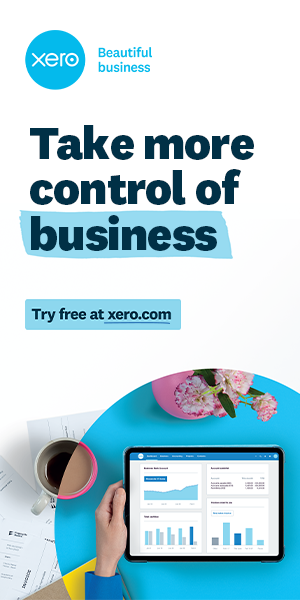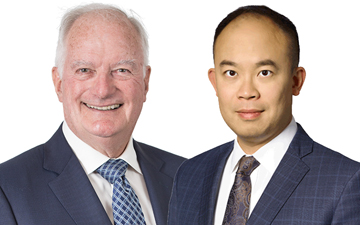Intergenerational business transfer rules are changing in 2024

Kenneth Keung and Jason Lau of Moodys Private Client Law say tax practitioners will need to ensure they have a full understanding of new IBT rules
Introduction
Section 84.1 of the Income Tax Act[1} as we know it today got its start in 1985, concurrent with the introduction of the capital gains exemption (“CGE”). It is an anti-avoidance rule that prevents surplus from being stripped from corporations as a tax-free/lower-taxed capital distribution. For section 84.1 to apply, there needs to be a transfer of shares of a corporation (the “subject corporation”) by an individual or trust to a non-arm’s length corporation (the “purchaser corporation”), and immediately after the disposition, the purchaser corporation and the subject corporation are “connected” — which generally means more than 10% ownership.
If these conditions apply, the maximum amount that can be received by the vendor from the purchaser corporation as non-share consideration (e.g., cash, promissory note, etc) and the paid-up capital (“PUC”) of the share consideration is restricted to the greater of the transferred subject corporation shares’ PUC and “hard adjusted cost base” (“hard ACB”).
Hard ACB is equal to the ACB of the subject corporation shares without counting any ACB that is derived from their 1972 V-Day value or any CGE claimed by the vendor or anyone not dealing at arm’s length with the vendor.[2] For this purpose, claiming a capital gain reserve is deemed equivalent to claiming the CGE.[3]
The following is a typical example of a taxpayer unwittingly walking into section 84.1. The sole shareholder (“Vendor”) of an operating company (“Opco”) sells their shares of Opco, which have nominal ACB and PUC, to a holding company (“Holdco”) that the Vendor also controls. On the sale, the Vendor claims the CGE to shelter the entire capital gain on the sale. If Holdco issues its own shares to the Vendor as consideration, the PUC of those shares will be reduced to a nominal amount by virtue of section 84.1. In addition, if Holdco provides non-share consideration to the Vendor, such as a promissory note, section 84.1 will recharacterize such amount as a taxable dividend to the Vendor.
A longstanding criticism of section 84.1 was that, because the section applies only to non-arm’s length sales, it acts as a disincentive for business owners who wish to sell their business to family members, particularly to their children who would otherwise take over and carry on the family business. If a Vendor claims the CGE on the sale of Opco shares to their children’s corporation in return for shares, the Vendor would be limited to receiving low PUC shares of the purchaser corporation. On the other hand, if the Vendor sold the Opco shares to an arm’s length buyer, the Vendor can claim the CGE (and receive capital gains treatment on any excess sale proceeds) and there is no limit to the type of sale consideration that can be received.
The Department of Finance’s (“Finance”) inaction in dealing with this criticism eventually led to the introduction of a private member (Bill C-208). Bill C-208 was designed to create a limited exemption from section 84.1 for certain share transfers between certain family members. Bill C-208 was a far-cry from the careful and overly cautious drafting we have seen from Finance over the last decade. Somewhat surprisingly, Bill C-208 was passed into law on June 29, 2021, despite Finance’s opposition.
Overview of Bill C-208 Exemption
Bill C-208 introduced new intergenerational business transfer rules (“IBT”), which deems the taxpayer and purchaser corporation to be dealing at arm’s length for the purposes of section 84.1 so long as:
i) the subject corporation shares are qualified small business corporation shares or family farm or fishing corporation shares (“QSBC shares” and “FFFC shares”),
ii) the purchaser corporation is controlled by one or more adult children / grandchildren of the Vendor,
iii) the purchaser corporation does not dispose of the subject corporation shares within 60 months of their purchase, and
iv) the Vendor provides to the CRA an independent appraisal of the FMV of the subject shares, accompanied by an affidavit signed by the vendor and a third party attesting to the disposal of subject shares.[4]
Other than these basic requirements, Bill-C208 did not impose any further restrictions for the application of the IBT exception to section 84.1.[5] In effect, this permitted taxpayers to take advantage of the CGE and effect surplus stripping transactions in scenarios where no true intergenerational transfer has taken place.
Finance’s Legislative Response to Bill C-208
Finance’s final legislative proposals,[6] released in November 2023,[7] aim to tighten the conditions for the application of the IBT exemption to ensure that the exemption is only available in situations where a genuine intergenerational transfer has occurred.
Essentially, the revised IBT rules contain a series of tests that can be divided into three chronological categories: prior to, at the time of, and subsequent to the disposition of the subject corporation shares (the “Disposition Time”). The new tests may be met by one of two different methods: either by an immediate intergenerational transfer (“Immediate Transfer”) or by a gradual intergenerational transfer (“Gradual Transfer”). It is noteworthy that the Immediate and Gradual Transfer methods only really differ for those tests that relate to the time “after” the Disposition Time. These differences will be outlined below.
Criteria to Satisfy Prior to the Disposition Time
One Time Sale
The Vendor has not, at any time after 2023, sought an exemption under the IBT rules in respect of a disposition of shares that derive their value from the same active business that is relevant to determining whether they are “qualifying” QSBC or FFFC shares. In other words, the exception may only apply once in respect of subject shares that derive their value from the same family business. Finance’s intent is clear: the IBT exemption is not intended to facilitate successive dispositions of shares in the same business.[8] It is important to note that this was added to the legislation “late in the game” and appears to negatively impact transfers of shares under the Gradual Transfer rules.[9]
However, the final legislation has clarified that this “one time sale” restriction does not apply to Vendors who have disposed of their subject shares prior to 2024 in accordance with the existing Bill C-208 version of the IBT rules.[10] As a result, Vendors who have structured the disposition of shares in tranches that began pre-2024 can still utilize the new exemption (for one-time only) under the new IBT rules.
There is another important change from the prior version of the draft legislative changes to the section 84.1 exemption.[11] Previously it was required that the Vendor, either alone or together with a spouse or common-law partner, must have de jure control of the corporation and no other person or group of persons may have de facto control of the subject corporation.[12] Essentially, the Vendor must have both legal and factual control of the subject corporation immediately before the Disposition Time. However, this requirement does not exist in the final legislation which now permits Vendors who don’t have legal and/or factual control of the subject corporation to take advantage of the exemption to section 84.1.
Criteria to Satisfy at the Disposition Time[13]
Subject Shares must be Qualifying Shares
At the Disposition Time, the subject shares must be qualifying shares under subsection 110.6(1) of the Act — either QSBC or FFFC shares. Finance’s intent is that the IBT exemption should only apply in respect of subject shares of a corporation that carries on active business in Canada, which QSBC / FFFC shares typically represent. This is similar to the requirements under Bill C-208.
Vendor Must be an Individual Other than a Trust
At the disposition time, the Vendor must be an individual other than a trust.[14] The trust prohibition is likely to ensure that the IBT exemption cannot be multiplied outside the rules’ parameters.[15] Therefore, a trust that holds QSBC / FFFC shares would have to distribute the shares (on a tax-deferred basis if the conditions to subsection 107(2) are met) to an individual beneficiary who will be the Vendor prior to the Disposition Time in order to access the IBT exemption.
Children Must Control the Purchaser Corporation
At the Disposition Time, one or more children, each of whom is 18 years of age or older at the Disposition Time, must have de jure control over the purchaser corporation. It is notable that for the purposes of the new IBT rules, the definition of a “child” is extended to include the following of the Vendor or the Vendor’s spouse / common-law partner: grandchildren and great-grandchildren, nieces and nephews, great-nephews and great-nieces, and the spouses / common-law partners of children including nieces and nephews.[16]
Criteria to Satisfy Subsequent to the Disposition Time
Vendor Must Relinquish Control of Underlying Business
Immediate Transfer[17]
At all times subsequent to the Disposition Time, the Vendor must not have de jure or de facto control over any one of i) the subject corporation, ii) the purchaser corporation or iii) any person or partnership that carries on an active business relevant to determining whether the subject shares are qualifying shares at the disposition time — the latter is defined as a “relevant group entity” (“RGE”).[18]
Very generally, subject shares are “qualifying shares” under the Act if a sufficient portion of the subject corporation’s assets are used principally in an active business or farming/fishing business in Canada, and there are certain rules that look through subsidiary entities under the subject corporation. These subsidiary entities, whether they are corporations or partnerships, would be relevant in determining whether the shares of subject corporation qualify as either QSBC or FFFC shares, and therefore they would be considered RGEs in which the Vendor must not have de jure or de facto control at all times subsequent to the Disposition Time in order to meet this test.
Gradual Transfer[19]
The Gradual Transfer criterion requires only that the Vendor not have de jure control over the subject corporation, purchaser corporation, or any RGE at all times subsequent to the Disposition Time, subject to “10-Year Test” discussed below. This variation allows the Vendor to maintain some element of factual control while the underlying business transitions to the next generation over an extended period of time. While Finance has previously cautioned in its explanatory notes to a prior version of this legislation that this rule is not to be relied upon by a Vendor “as justification for retaining effective or factual control over one or more of the subject corporation, purchaser corporation or relevant group entity”[20], the notes to the final legislation now explicitly state that the Vendor need not relinquish factual control of the subject corporation, purchaser corporation or any RGE.[21]
Transfer of Voting and Growth Shares
Immediate Transfer and Gradual Transfer[22]
At all times after the Disposition Time, the Vendor, either alone or with their spouse or common-law partner, must not own, directly or indirectly[23], 50% or more of any shares of any class of the subject corporation, purchaser corporation, or equity interest in any RGE. Furthermore, once 36 months have passed after the Disposition Time, the Vendors must not own any shares of the subject corporation, purchaser corporation, or equity interest in any RGE within 36 months of the disposition time. It is important to note that non-voting preferred shares[24] are excluded from consideration for both portions of this test, which is intended to apply only to voting or growth shares.
Mandatory Reduction of Economic Interest Within 10 Years (Gradual Transfer Only)
Gradual Transfer[25]
For the Gradual Transfer method only, the draft legislation requires a substantial reduction in the Vendor’s economic interest in the underlying business within 10 years of the Disposition Time (the “10-Year Test”) (the moment this economic interest is reduced below a required threshold is defined as the “Final Sale Time”, this event is relevant in other tests as well).[26] Economic interest is defined to include any debt or equity interest, whether held directly or indirectly, in the subject corporation, purchaser corporation, or any RGE. The Explanatory Notes indicate “these requirements are intended to ensure that both ownership and factual control of the entities that hold interests in the underlying active business are transferred from the taxpayer (and a spouse or common-law partner) to their child or children within 10 years of the disposition time.”
The economic interest must stay reduced for all times after the Final Sale Time. It is conceivably possible for a Vendor, whether alone or together with a spouse / common-law partner, to have met the 10-Year Test only to accidentally breach it later by re-investing into the business and crossing the economic interest threshold. Therefore, future investment or loans to the underlying business by the Vendor or their spouse / common-law partner requires careful consideration.
The threshold amount of mandatory reduction is computed by reference to the Vendor’s fair market value (FMV) of all interests that were owned, directly or indirectly, by the Vendor and their partner immediately before the Disposition Time. The mandatory reduction will vary depending on whether the subject shares were QSBC or FFFC shares at the time of disposition — if QSBC shares, then the Vendor’s economic interest must not exceed 30% of their “original” FMV at disposition time, and if FFFC shares, then it must not exceed 50%. Subject to these limits, it is possible for the vendor(s) to continue to hold debt and non-voting preferred shares in the relevant business entities for an indefinite period.
Control, Active Engagement, and Continuous Active Business (“Child Control Test”, “Active Engagement Test”, and “Continuous Active Business Test”)
Immediate Transfer[27]
At all times, within 36 months of the Disposition Time, the child or group of children must have de jure control of the purchaser corporation. The Explanatory Notes (along with criteria to satisfy section 84.1(2)(e)) make it clear that during this period of time the purchaser corporation must retain legal control of the acquired interest in the underlying active business. Furthermore, the child, or at least one member of the group of children, must be actively engaged on a regular, continuous and substantial basis (“Actively Engaged”) in a “relevant business” of the subject corporation or RGE. Lastly, all relevant businesses of the subject corporation / RGE must continue to be carried on as active businesses within the relevant time frame.
For the purposes of determining Actively Engaged, the test borrows from the Tax-on-Split-Income (“TOSI”) provisions originally introduced in 2019. For TOSI purposes, an individual is deemed to be Actively Engaged if they work in the business at least an average of 20 hours per week during the portion of the year in which the business operates. It is important to note this bright line test is merely a deeming rule; it is possible for an individual to still be Actively Engaged on factual basis even if they do not meet the 20 hour per week test; the Explanatory Notes implies that this treatment also applies in the context of the new IBT rules.[28]
Gradual Transfer[29]
For Vendors applying under the Gradual Transfer method, the minimum control and continuously active business period of 36 months is extended to the later of 60 months and the Final Sale Time.
Transfer of Management with Safe Harbour (“Management Transfer Test”)
Immediate Transfer[30]
Within 36 months of the disposition time, or a greater period of time as is reasonable under the circumstances, the Vendor must take reasonable steps to i) transfer the management of each relevant business of the subject corporation and any RGE to the child (or at least one member of a group of children) and ii) permanently cease to manage each relevant business of the subject corporation and any RGE.
“Management” for the above test is defined to be “the direction or supervision of business activities but does not include the provision of advice”.[31] Given the factual nature of this test, it can be expected that this will result in disputes between the CRA and the Vendor as to whether this test has been satisfied. Hopefully the CRA will provide additional guidance to minimize these concerns.
Gradual Transfer [32]
The safe harbour time of 36 months under the Immediate Transfer method is extended to 60 months for the Gradual Transfer method; the test is otherwise identical.
Joint Tax Election Required [33]
In recognition of the fact that the Vendor is at the mercy of the child(ren) in meeting some of the Post Disposition Time tests above, there is a joint tax election requirement for the new IBT rules to apply. The Vendor and each child involved in the transaction must jointly elect in prescribed form for the particular exemption to apply to the share transaction and must file this form with the CRA on or before the Vendor’s tax-return filing due-date for the taxation year which includes the Disposition Time. By filing the joint tax election, the child(ren) becomes jointly, severally, and solidarily liable for any additional tax arising from a non-application of the IBT rules.[34]
Extension of Reassessment Periods [35]
In acknowledgement that years will have elapsed before the CRA can determine whether the IBT tests have been met, Finance has also extended the “statute-barred” limitation period specific to the application of these rules. The length of the extended reassessment period depends on whether the Immediate or Gradual Transfer method is used; it is 3 years for the former and 10 years for the latter. Since the normal reassessment period is 3 years after a notice of assessment was issued in respect of a particular year, the extended reassessment period will last up to 6 years in the case of an Immediate Transfer and up to 13 years for a Gradual Transfer. However, the CRA’s scope to reassess under the extended period is limited to the disposition of the subject shares, and the Minister does not have a blank check to fully open the relevant tax year for other issues. Audit and verification should be expected, given that the tax election filing puts taxpayers squarely in CRA’s crosshairs.
Effect of Meeting all Criteria
Vendors meeting all tests described above will be deemed to deal at arm’s length with the purchaser corporation at the Disposition Time and consequently will be exempt from section 84.1. Another benefit of falling within the IBT exemption is that the Vendor’s capital gain reserve is extended from five years to ten years.[36]
Additional Relieving Provisions
Finance has recognized that certain tests may not be met through no fault of the Vendor or the children and have provided various relieving provisions that deem the required tests to have been met under certain conditions. These relieving provisions can be roughly categorized as follows: Exit Events, Loss-of Active-Child Events, or Insolvency Events.
Exit Event [37]
An Exit Event occurs when all the children who control the purchaser corporation at the Disposition Time disposes of all their shares in the subject corporation, purchaser corporation, or interests in RGEs to arm’s length parties. The Child Control, Active Engagement, Continuous Active Business, and Management Transfer Tests are all deemed to have been met at the time of the Exit Event.
Where a child disposes of their shares to another child of the Vendor or Vendor’s partner[38], the sale is deemed to be an Exit Event for the vending child; the recipient child must still continue to adhere to the management, control, and active engagement tests discussed above.
Loss-of-Active-Child Event [39]
A Loss-of-Active-Child Event occurs when the child has either died or suffered one or more “severe and prolonged impairments” in physical or mental functions. Where more than one child is actively engaged in the business, this relieving provision requires each member of this active group to have died or suffered one or more severe and prolonged impairments. Whether an impairment of a physical or mental function is “severe and prolonged” is not defined within the new IBT rules, but likely will be determined based on the same criteria that applies to the existing disability tax credit regime.[40]
The Child Control, Active Engagement, Continuous Active Business, and Management Transfer Tests are all deemed to have been met at the time of the Loss-of-Active-Child Event.
Insolvency Event [41]
An Insolvency Event occurs when the business of the subject corporation or RGE has ceased to be carried on due to the sale of all business assets to satisfy debts owed to creditors of the subject corporation or RGE. The Insolvency Event is unique in that it relieves only the Active Engagement Test, the Continuous Active Business Test, and (partially) the Management Transfer Test[42], deeming them to have been met at the time of disposition of all business assets.
Continuity Rules [43]
For corporations that undergo qualifying amalgamations[44], and wind-ups[45], there are rules that treat the continuing corporation as the same corporation as each predecessor corporation for specific purposes of the Act.[46] These rules are being amended to ensure the amalgamation of a subject corporation and purchaser corporation, and the winding-up of a subject corporation into a purchaser corporation are permitted under subsections 84.1(2.31) and (2.32) and will continue to apply to the reorganized corporate group.
Conclusion
Finance’s final legislative proposals have substantially tightened the IBT rules from its Bill-C- 208 counterpart. By introducing a new series of management, control, and active business / active engagement tests, the revamped rules attempt to ensure that the IBT exemption will only apply to transactions in which there is a genuine intergenerational transfer of a business. Practitioners will need to carefully consider the circumstances of their clients and ensure that they have a full understanding of the new IBT rules, as there are many potential missteps after the Disposition Time that could cause the IBT exemption to be revoked leading to adverse tax consequences. As well, in the time remaining in 2023, some business owners may want to review with their tax advisors the pros and cons of effecting an intergenerational business transfer under the existing Bill C-208 rules.
Footnotes
1. R.S.C. 1985, c. 1 (5th Supplement) as amended, herein the “Act”. Unless otherwise stated, all statutory references in this Report are to the Act.
2. Subsection 84.1(2).
3. Subsection 84.1(2.01).
4. Refer to current paragraph 84.1(2)(e) and subsection 84.1(2.3).
5. Current paragraph 84.1(2.3)(b) also attempts to reduce the CGE deduction available to the vendor as a function of taxable capital employed in Canada by the subject corporation. However, the CRA has confirmed that the legislation is not effective in doing so, nor does it otherwise affect a taxpayer’s ability to rely on current 84.1(2)(e). See CRA Views 2022-0928721C6 dated May 3, 2022 (CALU CRA Roundtable, Q. 3).
6. Draft paragraph 84.1(2)(e) and subsections 84.1(2.3), (2.31) and (2.32).
7. Department of Finance Notice of Ways and Means Motion dated November 28, 2023 which is effective for share sale transactions occurring on or after January 1, 2024. Herein the “final legislation”.
8. Draft paragraph 84.1(2.31)(a) and (2.32)(a).
9. A CALU submission dated September 7, 2023 to Finance had recommended that the “one-time sale” criteria be removed from the final legislation.
10. CALU’s submission to Finance dated September 7, 2023 had also requested this clarification to the rules.
11. Draft legislation released by the Department of Finance on August 4, 2023. Refer to draft paragraphs 84.1(2.3)(b), 84.1(2.31)(a) and (2.32)(a).
12. De jure control generally refers to legal control or share ownership that grants majority voting power. This is contrasted by de facto control, which refers to economic and other influences that grant effective control.
13. Draft paragraphs 84.1(2.31)(b) and 84.1(2.32)(b).
14. For income tax purposes, a trust is generally deemed to be an individual under subsection 104(2) of the Act, but a trust is not entitled to the IBT exemption.
15. The Department of Finance Explanatory Notes (November 2023) indicate that trusts are specifically excluded “to prevent their use by individuals seeking to effectively multiply their lifetime capital gains exemption limit using accommodating beneficiaries.”
16. Draft paragraph 84.1(2.3)(a), which adopts and expands the definition of “child” from subsection 70(10) of the Act for the purposes of the IBT exemption.
17. Draft paragraph 84.1(2.31)(c).
18. Where the RGE is a partnership, for the purposes of determining whether control has been relinquished, the new IBT rules will deem the partnership to be a corporation with a single class of 100 shares outstanding. Each member of the partnership is then allocated a percentage of shares based on their proportionate partnership interest as of the last fiscal period of the partnership ending before the relevant time; if no fiscal period has ended since the partner became a member of the partnership, or if the fiscal period is otherwise undeterminable, the allocation is based on proportionate FMV of the partnership interest instead. See draft paragraphs 84.1(2.3)(b)).
19. Draft paragraph 84.1(2.32)(c).
20. Department of Finance – Explanatory Notes (August 2023), herein the Explanatory Notes.
21. The Explanatory Notes.
22. Draft paragraphs 84.1(2.31)(d) and (e) and (2.32)(d) and (e).
23. Defined in draft paragraph 84.1(2.3)(c).
24. Formally defined for the purposes of these requirements under subsection 256(1.1) of the Act as shares of a “specified class”. Not all preferred shares are exempt by default; they must have the attributes as prescribed under 256(1.1) which, very generally, are: non-voting, fixed dividend entitlement, annual dividend rate less than or equal to prescribed rate at time of issuance, redemption amount less than or equal to FMV of subscription consideration plus unpaid dividends and are not convertible or exchangeable.
25. Draft paragraph 84.1(2.32)(f).
26. The Final Sale Time is determined at the time that the economic interest is reduced below the required threshold.
27. Paragraph 84.1(2.31)(f).
28. The Explanatory Notes.
29. Draft paragraph 84.1(2.32)(g).
30. Draft paragraph 84.1(2.31)(g).
31. Draft paragraph 84.1(2.3)(i).
32. Draft paragraph 84.1(2.32)(h).
33. Draft paragraphs 84.1(2.31)(h) and (2.32)(i).
34. Draft subsection 160(1.5).
35. Draft paragraph 152(4)(b.8).
36. Draft subsection 40(1.2).
37. Draft paragraph 84.1(2.3)(e).
38. Draft paragraph 84.1(2.3)(f). It is important to keep in mind the extended definition of “child” under draft paragraph 84.1(2.3)(a) for purposes of the new IBT rules.
39. Draft paragraph 84.1(2.3)(g).
40. Found under sections 118.3 and 118.4 of the Act.
41. Draft 84.1(2.3)(h).
42. The Management Transfer Test is two-fold and requires reasonable steps taken by the Vendor to i) transfer management of each relevant business of the subject corporation to at least one child and ii) permanently cease to manage each relevant business of the subject corporation; only the former is deemed to have been met by an Insolvency Event.
43. Amended paragraph 87(2)(j.6).
44. Defined in subsection 87(1).
45. Subsection 88(1).
46. See paragraph 87(2)(j.6) and 88(1)(e.2) respectively.
Kenneth Keung, CA, CPA (CO, USA), TEP, CFP, MTAX, LLB is a director of Canadian tax advisory at Moodys Private Client Law LLP. Jason Lau, CPA is a tax advisor at Moodys. This article was originally published in the CALU Report of the Conference for Advanced Life Underwriting. It is reprinted with permission. Author photos courtesy Moodys Private Client Law LLP.








(0) Comments